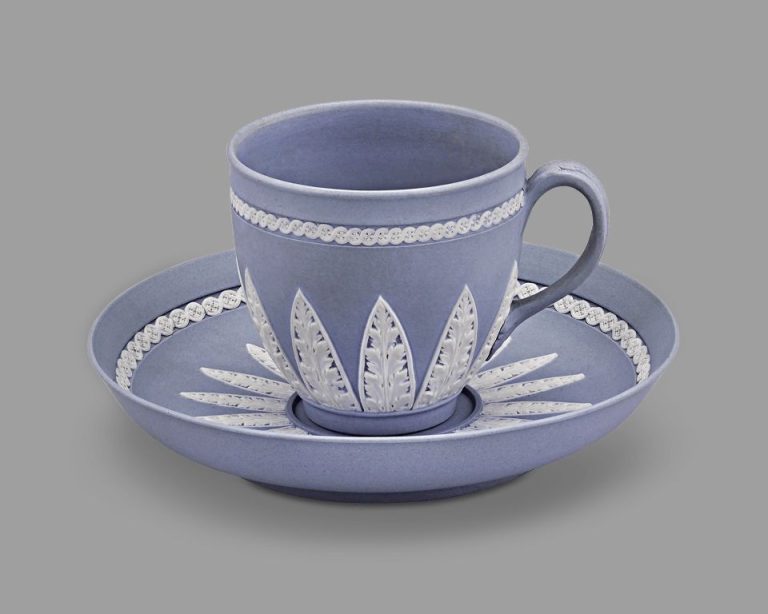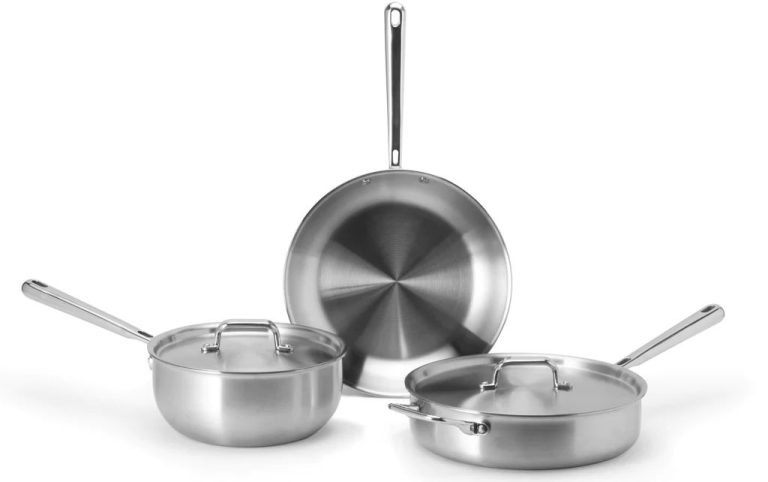What Can You Make A Soap Dish Out Of?
A soap dish is an essential bathroom accessory used to store bars of soap and allow them to drain properly between uses. Soap dishes have been around for generations and can be found in nearly every home. They serve the important purpose of keeping soap bars dry and preventing them from becoming mushy, dissolving too quickly, or spreading bacteria.
Soap dishes come in countless shapes, sizes, styles and materials. The versatility of soap dishes stems from the fact they can be fashioned out of many household items and materials. When constructing or purchasing a soap dish, considerations include drainage, soap longevity, aesthetics, and matching your existing bathroom décor.
This overview examines some of the most common and creative materials used to make homemade or store-bought soap dishes.
Clay is one of the most common and versatile materials for sculpting a homemade soap dish. The process starts with sculpting the wet clay into the desired shape and size for holding bars of soap. Once sculpted, the clay soap dish is left to air dry fully before being fired in a kiln, which hardens and strengthens it. Firing turns the soft clay into a durable ceramic material.
There are several types of modeling clays that can be used:
Pottery Clay
Pottery clay, like stoneware or earthenware clays, are water-based clays that can be purchased at art supply stores. When fired at high temperatures, pottery clay makes a sturdy dish that is waterproof and stain resistant. Pottery clay is available in different colors and textures like smooth, coarse, or grogged (with small pebble-like granules added). The finished look depends on the type of clay used.
Polymer Clay
Polymer clay is an oil-based modeling clay that air dries into a strong, plastic-like material. It does not require firing in a kiln. Polymer clay comes in many bright colors that mix well together. The finished polymer clay soap dish has a uniform plastic appearance.
Air-Dry Clay
Air-dry clay is a water-based clay that dries naturally into a terracotta type finish. It does not require kiln firing. Air-dry clay is often packaged as a powder requiring mixing with water. The finished soap dish will be fragile, so a sealer can be applied for protection.
Clay is a versatile material to work with using simple hand sculpting techniques. It can be molded into any shape imaginable. The finished clay soap dish will have a handmade artisan look. Drawbacks are that clay can be messy to work with and air-drying times may be long. Fragile finished pieces require extra care. With its ability to be fired into a ceramic, clay makes very durable soap dishes able to withstand daily use.
Wood
Wood is a natural and attractive material commonly used to create soap dishes. The wood needs to be sealed properly to prevent warping and deterioration when exposed to water. Hardwoods like oak, maple, walnut, cherry, and mahogany can be carved, cut, or assembled into a soap dish shape. Softer woods like pine can also be used but may show wear over time.
To waterproof and seal the wood, a food-safe finish like beeswax, mineral oil, or salad bowl finish should be applied. Polyurethane can also be used to seal and protect the wood, but avoid polyurethane containing VOCs. Multiple thin layers of the sealant should be applied, allowing each coat to fully dry before adding the next. The sealant will help prevent water damage and warping of the wood over time when used as a soap dish. Proper sealing is essential for a long-lasting and functional wood soap dish.
Glass
Glass is a popular material for handcrafted and artisanal soap dishes. Glass can be blown or molded into a soap dish shape by skilled glass artisans. The glassblowing process allows the artist to create one-of-a-kind designs with beautiful colors and patterns. Molding glass is ideal for mass producing glass soap dishes with more uniform shapes and surfaces.
Glass has many strengths that make it well-suited for soap dishes. It is completely waterproof and nonporous, so soap residue will not seep in or stain the glass over time. Glass is also very easy to clean and sanitize. Glass soap dishes have an elegant, stylish look that can match modern or vintage bathroom décors. Clear glass blends into any setting, while colored glass adds a pop of brightness. The sleek shine and smooth feel of glass provide aesthetic appeal.
Metal
Metals like iron, steel, aluminum and copper are great options for handcrafting a soap dish. These types of metals can be forged, welded, or molded into custom shapes and sizes. Metal soap dishes are extremely durable, resistant to cracks and chips, and can last for many years with proper care. The style options are nearly endless with metal – you can sand and polish it for a shiny finish, let it develop a rustic patina, or paint it any color you’d like. Metal soap dishes also provide excellent drainage. Small holes can be drilled in the bottom or sides so water doesn’t pool under the soap, keeping it dry between uses. This is especially useful in bathrooms with high humidity. Overall, metal is one of the best materials for crafting a stylish, durable and functional soap dish that will hold up well to repeated use in a damp environment like a bathroom.
Stone
Soapstone, marble and other stones can be carved into soap dishes. Stone provides a naturally beautiful look that brings an element of nature into the bathroom. Marble soap dishes have an elegant, polished appearance, while soapstone has a more rustic, textured look. Stone is durable, heat-resistant, and easy to clean, making it a practical as well as decorative material. The natural variations and veining in stone also make each soap dish unique. With proper sealing and care, a stone soap dish can last for many years. Carving soap dishes out of existing stone slabs or blocks gives craftspeople an opportunity to highlight the inherent properties and aesthetics of the material. Overall, stone is a wonderful option for anyone looking to add a touch of timeless, earthy beauty to their bathroom.
Plastic
Plastic is a popular material for making soap dishes because of its durability and low cost. Plastic soap dishes can be mass produced using injection molding, making them very inexpensive.
Injection molding involves melting plastic material and injecting it into a mold. The plastic takes the shape of the mold as it cools. This allows soap dishes to be produced very quickly and identically. The molds can also be designed with various shapes, colors, and textures, allowing for many design options.
Plastic’s smooth, non-porous surface makes it easy to clean soap residue. It is also more durable than materials like ceramic that can chip or crack. Plastic resists water, soap scum, and bathroom mildew well. This durability and low cost makes plastic a practical choice for soap dishes.
Ceramic
Ceramic is an excellent material choice for handcrafted soap dishes. High-fired ceramics are durable, waterproof, and resistant to scratches, making them ideal for holding bars of soap in a wet bathroom environment. Ceramic soap dishes can withstand high temperatures and repeated use without wear.
There are several manufacturing methods for working with ceramic to create a soap dish. Slip casting involves pouring liquid clay into a plaster mold. When the clay thickens, the mold is drained and the remaining clay dries into the desired shape. The ceramic is then bisque fired to harden it before applying any glazes or decorative finishes. Handbuilding techniques like coil building or slab construction can also shape ceramic soap dishes. The ceramic clay is rolled into coils or flat slabs which are stacked and molded into the soap dish form.
Ceramic soap dishes have an artisanal, handcrafted look and feel. The colors and finishes possible with ceramic glazes allow for unique, decorative soap dishes. For those who enjoy making their own pottery, a homemade ceramic soap dish can be a satisfying DIY bathroom project.
Upcycled Materials
One creative way to make a soap dish is by repurposing and upcycling materials that would otherwise be discarded. With a little imagination, many common household items can be given new life as a handy soap dish.
For example, glass bottles or jars make beautiful soap dishes with a bit of decoration. Clean out an empty jar, remove any labels, and paint or decoupage the outside to make it your own. Or distress, stain, or etch a pattern on the glass for a unique look. Small plates, ramekins, or bowls also work well for holding bars of soap.
Metal food cans like soup or coffee cans can become industrial-chic soap dishes. Thoroughly clean and remove any sharp edges from the can, then spray paint or use rub’n buff to give it a metal finish. If you want to get really creative, use the bottom of the can as the soap dish and cut out a design from the sides.
Ceramic plates or saucers, especially those with a chip or crack, are easily converted into soap dishes. Consider adding a drain hole, decorating with mosaic tiles, or attaching some metal legs to raise the dish. Old Silverware like spoons can also be wired together into quirky yet functional soap holders.
With some creativity and craftiness, you can keep useful items out of the trash while making an eco-friendly and stylish soap dish.
Conclusion
There are many creative options for making your own homemade soap dish, ranging from common materials like clay, wood, and glass to more unique choices like upcycled items. When deciding what to make your soap dish out of, consider factors like your design skills, tools available, personal style preferences, and functional needs. For example, porous materials like wood may be prone to holding onto moisture compared to glass or metals.
The key criteria to evaluate are durability, moisture resistance, ease of cleaning, weight, aesthetics, and safety. Select a material you feel comfortable working with and that will result in a soap dish that matches your bathroom decor. With the right plan, tools, and techniques, you can create a custom soap dish that looks great and serves its purpose of holding soap.
Making your own soap dish can be a fun DIY project that allows you to add personal flair to your bathroom. With creativity and effort, you can design and build a unique soap dish using various everyday materials. The finished product will not only be functional but also meaningful since you crafted it yourself.





